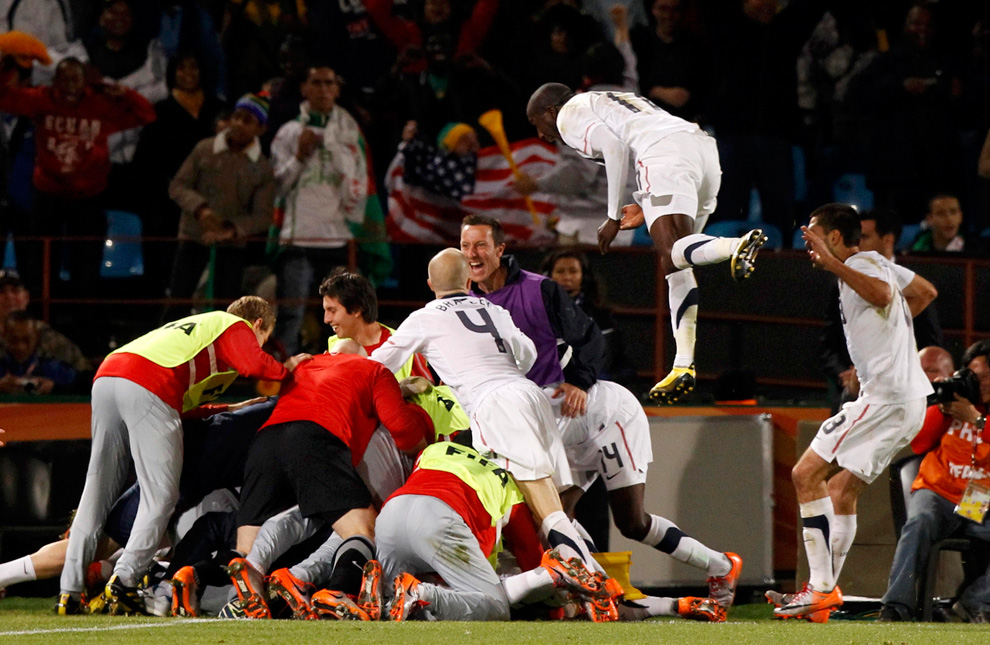The USMNT have wrapped up their annual January camp with a pair of ugly friendly wins over Iceland and Canada thanks to a couple of late goals. No one is going to overstate the importance, or lack thereof, of these victories as the annual January camp is comprised of primarily MLS based players since it’s their offseason, and the friendlies are typically nothing more then a money grab for US Soccer.
Never has that been more of the case than this year where the camp was also used as a time to prepare the U23 side for their crucial Olympic qualifying matches against Colombia in March.
Heading into the friendly matches, Jurgen Klinsmann spoke about how it wasn’t the results that were important, but rather giving new players a chance on the field and seeing how they do. While the starting XI in both games didn’t feature many new names, there were some players that certainly got a shot, the question is, how much will their performances actually matter when the USMNT gets back together for their crucial World Cup qualifiers in March?
The USMNT was not at it’s sharpest in Iceland match and was certainly even less so against Canada. One of the bright spots for the team was the creative play of Lee Nguyen, who provided the creativity that the US has so deeply lacked. The issue with Nguyen was his position. Thanks to Klinsmann’s preference to play a 4-4-2, Nguyen was forced to play on the outside, a position that was recently occupied by Fabian Johnson, who very well be the USMNT’s best player, in their last two qualifiers.
Nguyen’s style of play can be used on the wing, but as was shown when he tucked more inside in the second half of each game, he’s much more suited to play centrally. That leaves a question of where exactly will Nguyen fit when the US is at full strength, since Klinsmann prefers a Michael Bradley/Jermaine Jones pairing in the middle.
In theory, Nguyen could be used as a no. 10 and play centrally as a striker but that too would bring around some problems. Nguyen isn’t exactly a secondary striker, and Jozy Altidore is far less effective when playing without a second striker. Since Klinsmann is very committed to Altidore it would probably be best to use a formation that suits him, despite it hurting the rest of the team. The other problem is if Clint Dempsey ever returns to the team he would be that second striker.
Nguyen isn’t the only player that impressed in these games but could find himself out of luck. Klinsmann gave long looks to players such as Kellyn Acosta, Jerome Kiesewetter, Jordan Morris, and Darlington Nagbe. While all the youngsters were impressive, only it’s hard to see any of them breaking in to the team.
As of now, for better or worse, Klinsmann is still committed to the old guard. In the Iceland match, he started Michael Bradley and Jermaine Jones as his central midfield pair. This is despite the fact that over the years, the two of them have never done well as the pair in a two man midfield, as they both prefer to have a third holding midfielder behind them. That holding midfielder could have been Tony Tchani, who impressed in the second half against Iceland, however against Canada Klinsmann opted instead to start Mix Diskerud alongside Bradley in the midfield.
The same could be said for German-American forward Jerome Kiesewetter. In both games, the US attack looked stale and non-threatening for most of the game. In each game that changed when Kiesewetter was introduced as his threat from the right side made the US attack far more dynamic, but again he found himself on the bench at the start of the Canada match in favor of another Klinsmann favorite Gyasi Zardes, who didn’t exactly have his best games in either match.
Since one of the pre-stated goals of the camp was to help prepare the U23 team, you would think that Klinsmann would have played his more senior players in the first game while giving the younger players more of a chance to play in the game against Canada.
Instead, Klinsmann opted to start with more senior players in both games, despite how stale the senior players looked against Iceland. In fact, when faced with a selection dilemma at center back for the game against Canada, Klinsmann opted to start Jermaine Jones out of position rather then start an uncapped player. If you can’t start an uncapped player in a friendly that relatively few people are watching (there were less then 10,000 spectators and the game kicked off at 10:45 PM ET) then what is the purpose of playing a friendly.
At this point, it’s clear Klinsmann is still very committed to senior players he’s already been using. That will likely be even more true when the team reconvenes for World Cup qualifiers in March, and Klinsmann has all his players at his disposal. It’s hard to see any of the new players getting a fair shot to break in.
If the players who stood out against Iceland and Canada don’t get a chance in the upcoming games, then what is the point of having those friendlies to begin with?






